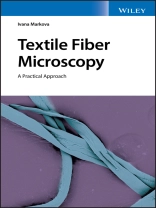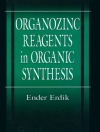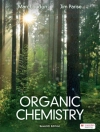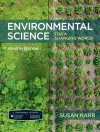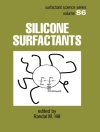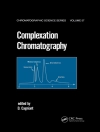A groundbreaking text to the study of textile fibers that bridges the knowledge gap between fiber shape and end uses
Textile Fiber Microscopy offers an important and comprehensive guide to the study of textile fibers and contains a unique text that prioritizes a review of fibers’ microstructure, macrostructure and chemical composition. The author – a noted expert in the field – details many fiber types and includes all the possible fiber shapes with a number of illustrative micrographs. The author explores a wealth of topics such as fiber end uses, fiber source and production, a history of each fiber and the sustainability of the various fibers.
The text includes a review of environmentally friendly fibers and contains information on the most current fiber science by putting the focus on fibers that have been mechanically or chemically recycled, for use in textile production. The author also offers an exploration of issues of textile waste and the lack of textile recycling that can help public policymakers with ways to inform and regulate post-industrial and post-consumer textile waste issues. This vital guide:
* Contains an accompanied micrograph for many fibers presented
* Includes information on how fiber microstructure is connected to fabric properties and how it affects the end use of fabrics
* Offers a review of the sophistication of textile fibers from a scientific point of view
* Presents a comparative textile fiber review that is appropriate for both for students, textile experts and forensic scientists
Written for students and professionals of apparel design and merchandising, and forensic scientists, Textile Fiber Microscopy presents an important review of textile fibers from a unique perspective that explores fibers’ microstructure, macrostructure and chemical composition.
表中的内容
PREFACE
ACKNOWLEDGEMENT
Chapter 1: Natural Cellulosic Fibers
H1: Seed Fibers
H2: Cotton
H2: Organic cotton
H2: Kapok
H2: Poplar
H2: Willow
H2: Coir
H1: Bast Fibers
H2: Linen
H2: Ramie
H2: Hemp
H2: Bamboo
H2: Jute
H2: Fiber Size.
H2: Nettle
H2: Bast Fibers in its Historical Context
H1: Leaf Fibers
H2: Sisal
H2: Henequen
H2: Abaca
H2: Pineapple leaves
Chapter 2: Animal Fibers
H1: Wool
H2: Cuticle Scales
H2: Scale pattern type (animal hair)
H2: Types of Scale Margins
H2: Cortex
H2: Medulla
H2: Fiber Size
H2: Fiber Morphology
H2: Merino wool and other fine wool fibers
H1: Luxury Fibers
H2: Cashmere
H2: Yangir
H2: Mohair
H2: Vicuna
H2: Camelid Fibers
H2: Alpaca
H2: Llama
H2: Shahtoosh
H2: Yak
H2: Other Identification Techniques to Note
H1: Silk
H2: Spider silk
Chapter 3: Fur Fibers
H1: Fur fibers
H2: Cuticle Scales
H2: Rabbit, Hare, and Angora Rabbit Fibers
H2: Angora hair
H1: Other Fur Fibers
H2: Mink and Ermine
H2: Kolinsky Mink
H2: Raccoon Dog
H1: Faux Fur
H1: Dog and Cat Fur
H2: Karakul
H2: Optical microscopy
H2: Measuring Hair Length
Chapter 4: Regenerated Cellulosic and Protein Fibers
H1: Regenerated Cellulosic Fibers
H2: Viscose Rayon
H2: Bamboo Rayon
H2: High Wet Modulus (HWM) Rayon
H2: Cuprammonium Rayon
H2: Lyocell Fibers
H2: A Review of Cross-sectional Shapes of Fibers
H2: Acetate Fibers
H1: Regenerated Protein Fibers
H2: Soybean Fibers
H2: Milk fibers
H2: Composite Cellulose Fibers
Chapter 5: Synthetic Fibers
H2: Nylon
H2: Polyester
H2: Delustering & Luster
H2: Variety of Cross-sectional Shapes
H2: Comparison Analysis
H2: Performance Textiles
H2: Acrylic fibers
H2: Spandex fibers
H2: Olefin Fibers
H2: Fiber Melting Point
H1: Microfibers
H2: Applications of Microfibers
H2: Bicomponent fibers
Chapter 6: Nanofibers
H1: Nanotechnology in Textiles
H2: Production of Nanofibers
H2: Uses of Nanofibers
H2: Nanowebs
H2: Nanocoatings
H2: Nanoparticles
H2: Electrically Conductive Fibers
H2: Porous Surface Fibers
H2: Microscopy
Chapter 7: Recycled Fibers
H1: Fiber Recycling
H2: Recycled Polyester via Chemical Recycling
H2: Recycled PET via Mechanical Recycling
H2: Recycling Nylon
H1: Recycled Cotton
H1: Recycled Wool
H1: Other Recycling Methods
Chapter 8: Historic Fibers
H1: Textile Fibers and History
H2: General Information – Ancient textiles
H2: Greek textiles
H1: The Use of Hemp in Central Europe
H1: Egyptian Textiles
H2: Middle Kingdom Linen Cloth
H2: Romano-Egyptian Textiles
关于作者
Ivana Markova, Ph D., is Assistant Professor at San Francisco State University. She is currently working on research testing new cellulosic fibers as possible reinforcement materials for composites.
